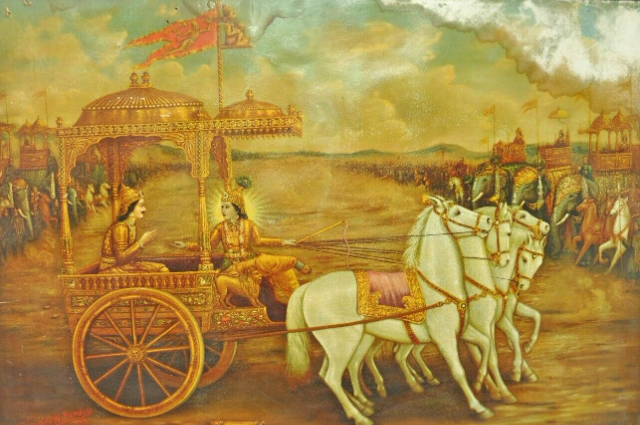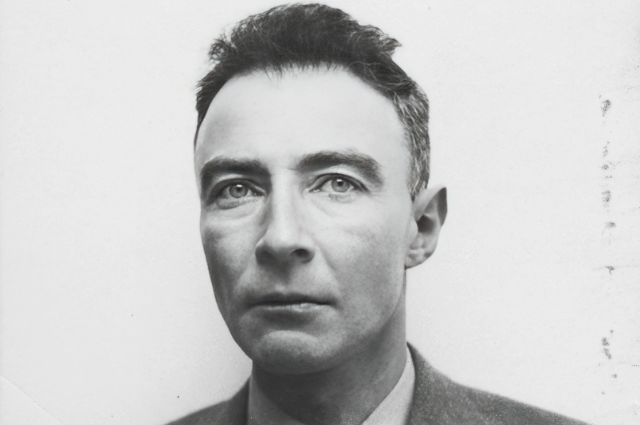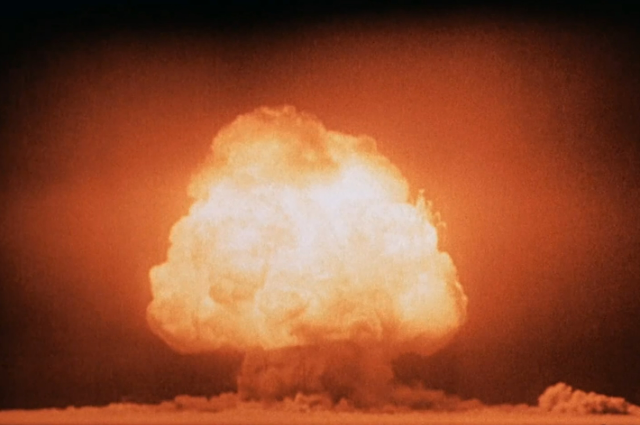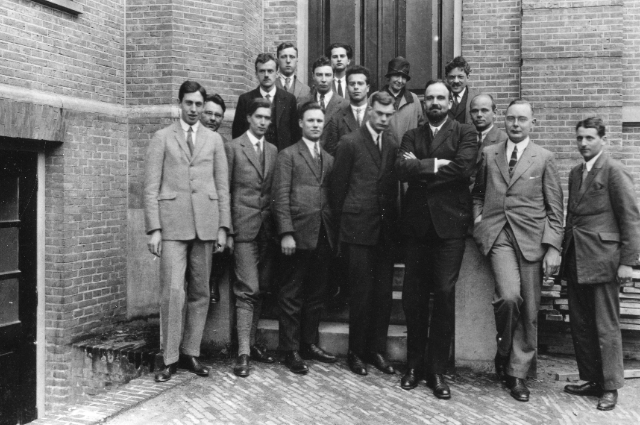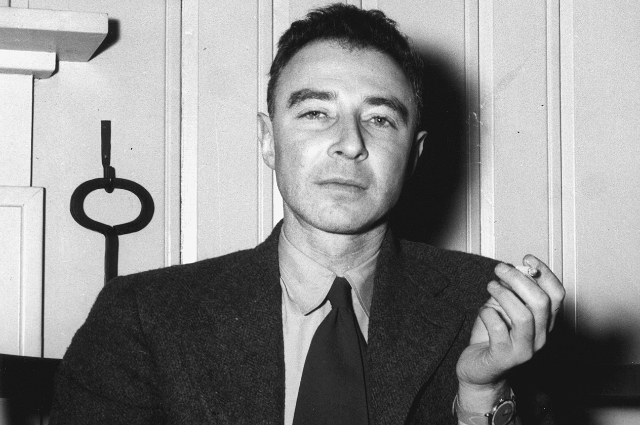'Now I Am Become Death, the Destroyer of Worlds'. - The Story of Oppenheimer's Infamous Quote.
This line from the Hindu sacred text, Bhagavad Gita has come to define Robert Oppenheimer but it isn't as simple as it seems. The meaning is more complex inside. Let's move to gather an inside-out insight of a dramatic yet an eventful life.
The Road to Oppenheimer:
A life full of topsy-turvy which was once so celebrated figure but still tragic. At a time when theorists were rocking the field of sciences, Robert Oppenheimer was an excellent and unrivaled physicist of that time even to Albert Einstein.
He is best known for having led the Manhattan Project, the top-secret American effort in the 1940s that resulted in the creation of the world's first atomic bombs, the very same ones that were dropped on Hiroshima and Nagasaki.
Oppenheimer was born in 1904 and died in 1967. He is noted to be the director of Los Alamos Laboratory during the development of the atomic bomb.
In the world of science, he was a celebrated figure and because of the invention he made that had implications regarding the political and moral issues relating to the role of scientists in the government.
EARLY LIFE:
He was the son of a German immigrant who had made his fortune by importing textiles in New York City. He was a prodigy kind of child
During his undergraduate studies at Harvard University, Oppenheimer excelled in Latin, Greek, Physics and studied Eastern philosophy. After completing his graduation in 1925, he moved to England to do research at the Cavendish laboratory at the University of Cambridge which already had a good reputation for studies on atomic structure under the leadership of Lord Ernest Rutherford. Here, in Britain, he also got the opportunity to collaborate with the scientific community of the country to advance in the field of atomic research. By 1927, he received his doctorate. He also visited some science centres in Leiden and Zurich and thereafter returned to teach physics at the University of California and the California Institute of Technology.
In tandem in the same decades, the quantum theories were marking the landscape of scientific research which asserted that mass was equivalent to energy and that matter could be both wavelike and corpuscular carried implications.
Oppenheimer's early research was devoted in particular to the study of energy processes in sub-atomic particles including electrons, positron, and cosmic rays. He also did some groundbreaking studies on neutron stars and black holes. He also got the opportunity to explore much to the development of quantum theories and their significance as that was into fire those days. Not only did he study and explore but also trained a whole generation of US physicists who were greatly affected by his intellectual abilities.
Oppenheimer and the Manhattan Project:
The rise of Hitler in Germany and his drastic changes in the political system toward dictatorship stirred his interest as well. During the Spanish Civil War in 1936-37, he sided with the Republic where he got acquainted with the Communist students. The tragic suffering and immediate censorship on Russian scientists by Joseph Stalin led him to withdraw his associations with the Communist Party and soon developed an interest in liberal and democratic philosophy.
The invasion of Poland by Hitler in 1937 sparked the World War II. German physicists such as Albert Einstein, Leo Szilard, and Eugene Weiner warned the US government of the danger looming before the humanity if the Nazis were the first to make the atomic bomb.
In August 1942, the US army was given the responsibility of organizing the efforts of British and US physicists to seek a way to harness the nuclear energy for military purposes and that became the famous 'Manhattan Project'. Oppenheimer was instructed to establish and administer a laboratory to carry out this assignment. In 1943, he chose the Plateau of LPS Alamos, near Santa Fe, New Mexico, where once Oppenheimer had once spent his summer vacations.
Oppenheimer was alleged by some military members that he and his friends are agents of Soviet Government and warned that members of left ideology shouldn't be involved in a secret operation led by USA. Thereafter, in a 1954 security hearing, Oppenheimer ruled out that those discussions were nothing but a tissue of lies.
Operation Trinity:
The joint effort of outstanding scientists a Los Alamos culminated in the first nuclear explosion on July 16th, 1945 at the Trinity site near the New Mexico state in North America. It was here only when on seeing the 'mushroom cloud' erupting out of that test explosion, he remarked that infamous quote that,
'Now I Am Become Death, the Destroyer of Worlds'.
The nuclear bombing on the Japanese towns of Hiroshima and Nagasaki did numb him and he got dejected noting the fact that his invention is going to cost many lives of this humanity. He also got worried at the prospect that if all the scientists will use the power of nuclear energy in developing nuclear weapons for their respective countries - in the event of a war, it shall be a 'nuclear war' and that would end the world. In 1945 itself, he resigned from his post. In 1947, he became the head of the Institute for Advanced Study until 1952 as chairman of the General Advisory Committee of the Atomic Energy Commission and also later opposed the development of the hydrogen bomb. He himself accepted that he has blood on his hands. He was both remorseful and proud at the same time but understood that what a terrible thing was this nuclear weapon. He understood about the horrors of Nazi Germany too and assisted Jews to escape out of Reich. He knew that these nuclear weapons really had no legitimate military target and it was nothing but purely a tool of mass destruction.
Remembering the Physics that made him great:
In Christopher Nolan's new film, Oppenheimer, we get to see a scene where the great physicists and his pupils had gathered to celebrate 'Black Hole Paper' that Oppenheimer wrote with his student Hartland Snyder, 'The world will remember the Day,' one of his students remarked.
It's actually got true. Physics does remember that paper. While Oppenheimer is remembered in history as the father of the atomic bomb and of course his contribution as a physicist was on black holes which can't be ignored. The work of Oppenheimer and Hartland Synder helped transform black holes from mathematical figures to actual reality in the cosmos out there.
Mecca of Physics?
A time was - when American theoretical physicists would always visit Europe once as it was considered to be the mecca of Physics and even Oppenheimer did that pilgrimage during his youth and graduation years and studied with some of the pioneers of quantum theory such as Max Born and Wolfgang Pauli. After Oppenheimer joined Berkeley, the scientists were all drawn there instead due to his intellectual capacity.
Oppenheimer and his students worked on a wide range of topics such as - nuclear physics, cosmic rays from quantum electrodynamics, and astrophysics. Working on multiple topics would be a nightmare for many scientists but Oppenheimer survived it all.
It was his versatility that he was appointed as the director of the Manhattan Project and oversee the development of the world's first nuclear weapons.
Into the Black Hole:- Oppenheimer and Snyder...!
Snyder was his most proficient student and was good at solving hard mathematical problems. He made contributions to accelerator physics and non-commutative field theory. Oppenheimer gave him to solve the problem of black hole. In collaboration with him, Snyder brought black holes to life.
The possibility of black holes had been discovered shortly after when Albert Einstein developed his theory of general relativity in 1915. According to this, matter warps the fabric of spacetime around it. In order to know about the time frame of that warp, physicists have to solve a set of equations known as Einstein's equations to get it. The first person to find such a solution was the German physicist - Karl Schwarzchild who computed the warping outside a perfectly spherical mass.
He inferred with his calculations that if a certain amount of mass was packed into a small enough radius, a black hole would exist around it. Below a certain radius, the neighbouring spacetime would curve into a pocket from which not even light cannot escape.
Most physicists dismissed the possibility of black holes as mathematical fiction. They pointed that no matter cannot be squeezed so much that it would form a black hole.
The next step came from the astrophysicist Subrahmanyan Chandra Shekhar. His work showed that black holes form when stars collapse under their own weight in case of short fuel. Still, the description of a star and it imploding was still not present.
Entry of Oppenheimer and Snyder:
Oppenheimer had already mastered the idea of stellar collapse and was quite convinced of the inevitability of black holes. He extended Chandra Shekhar's result with his another student - George Volkoff. With Snyder, Oppenheimer set out to provide the trace of the mathematical birth of black holes.
Explaining the collapse of a star in mathematical terms was quite a difficult task but Oppenheimer reduced it into a problem. He told Snyder to solve the problem for a perfectly spherical star with no internal forces. Though unrealistic was their model but their result was remarkably correct.
Still, they were left to uncover as to how the contraction of the star would affect the spacetime inside it. Little did they know that this problem had been solved a year earlier by an Indian physicist named Bishveshwar Datt.
They finally concluded that a black hole would ultimately form once the star collapsed into its critical radius.
Oppenheimer and Snyder's work also demonstrated the relativity of time for different observers. For an observer on an imploding star, it would be taken only a few hours while for a person outside it may be as long as an eternity.
Oppenheimer and Snyder worked enough to cease the debate on Black Holes. But many physicits were not ready to accept the weirdness of black holes and argued that Oppenheimer and Snyder assertions were too unrealistic. Thereafter, Oppenheimer too lost interest in this topic and it was only after Roger Penrose proved the inevitability of black holes - after which Oppenheimer-Snyder's paper was recognized. Unfortunately, both of these authors were no more by that time.
We can just only wonder as how Oppenheimer's life would have panned under different circumstances.
Re-visiting September 1st, 1939:
- Oppenheimer and Snyder's paper was published by the journal 'Physical Review'. At the same time, Neils Bohr and John Wheeler published a paper that explained nuclear fission and demonstrated the utility of isotope uranium-235 to stirr nuclear reactions.
- Politically, Hitler's invasion of Poland on the same day invoked the World War II.
Oppenheimer was caught in the change of events one by one and was never able to escape it.
Silver Lining & Sinister Projects In Contemporary World:
The development of atomic bombs tried to change the world in hopeful ways but this weapon is so destructive that the fear of nuclear weapons now overpowers all. Possibilities of nuclear wars has altogether deterred the chances of an actual war.
Countries like India or Pakistan or the present Russian-Ukraine conflict is further escalating chances of conventional warfare. Its a peril from countries on all sides.
J.Robert Oppenheimer and the Social Responsibility of Science:
Oppenheimer's contributions to the field of theoretical physics stands unparalleled. The coming of nuclear weapons as a part of human civilization is credited with him. Inventions are maneuvered in the cause of public interest.
Scientific Innovations can be manipulated for political uses.
Scientists apart from being accountable in their Doxa are equally responsible for what their invention can do to a society. The relationship of science with political context must be strictly defined.
The development of nuclear bombs was no less than a breakthrough in the scientific world. But that innovation fell prey to the politics running around WWII.
In this globalized world where everything is trans-rational, science assumes a greater role, and along with it comes many duties such as that of 'Social Responsibility'.
America to expand her political ambitions and as a part of a 'display of power' and to make Japan surrender without any condition used these weapons on the 6th and 9th of August 1945, respectively on Hiroshima and Nagasaki.
But what if, Science opaques it's research work?
What if, Science vanishes the Researcher Itself?
What if, Science extinguishes the World altogether?
What if, what if, and what if.....to what not...?
. . .
Reference:
- thehindu.com
- nature.com
- thelancet.com
- indianexpress.com
- britannica.com

